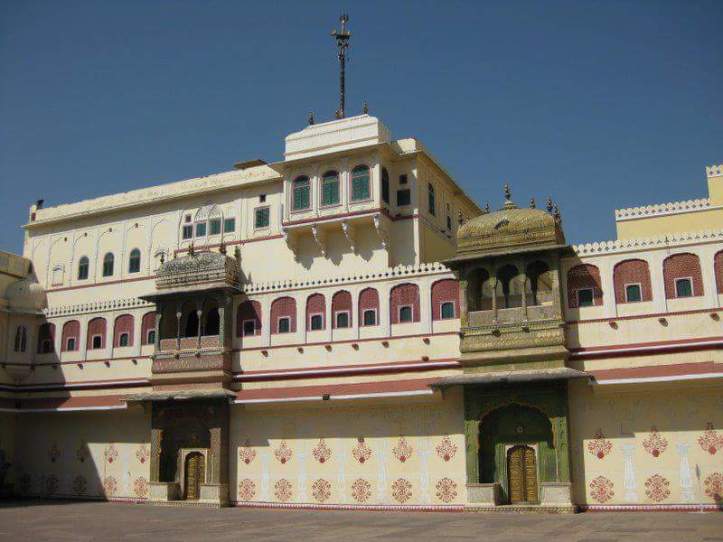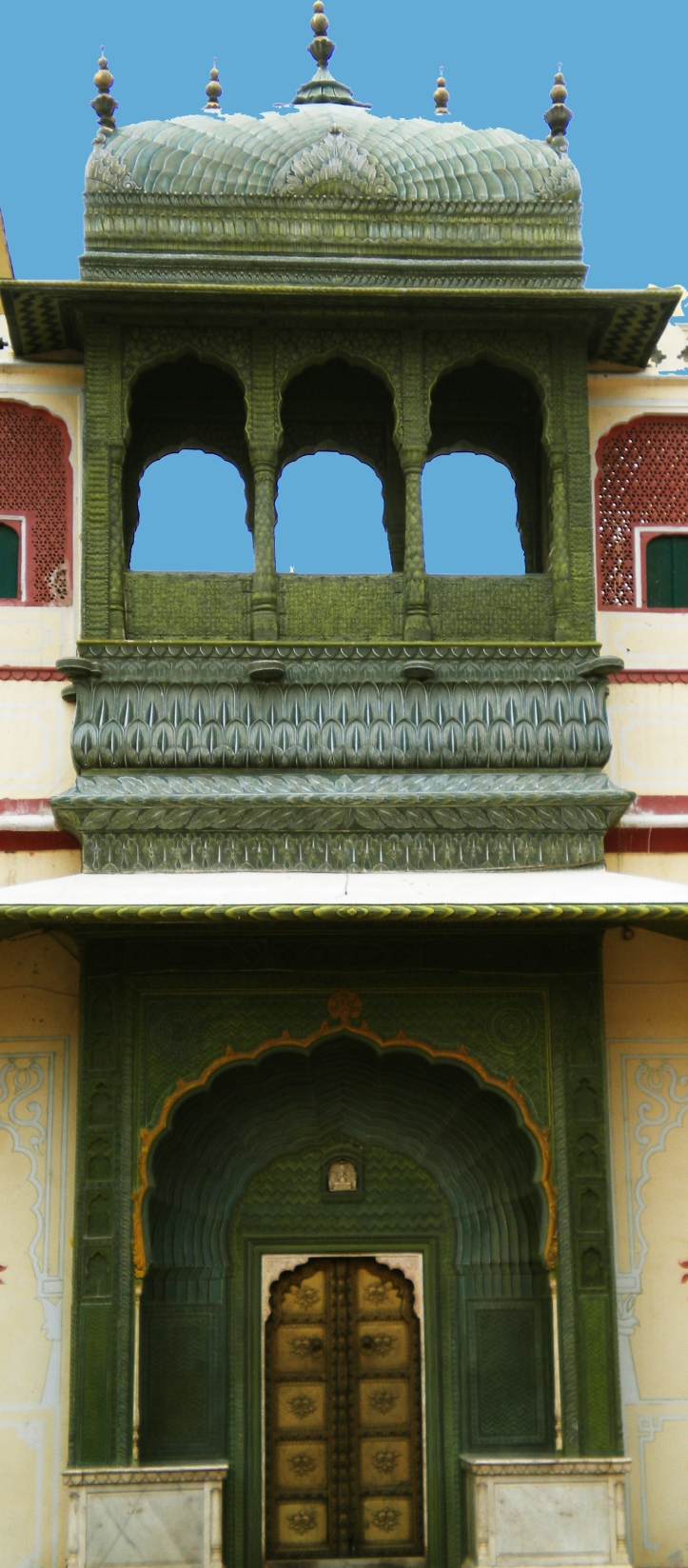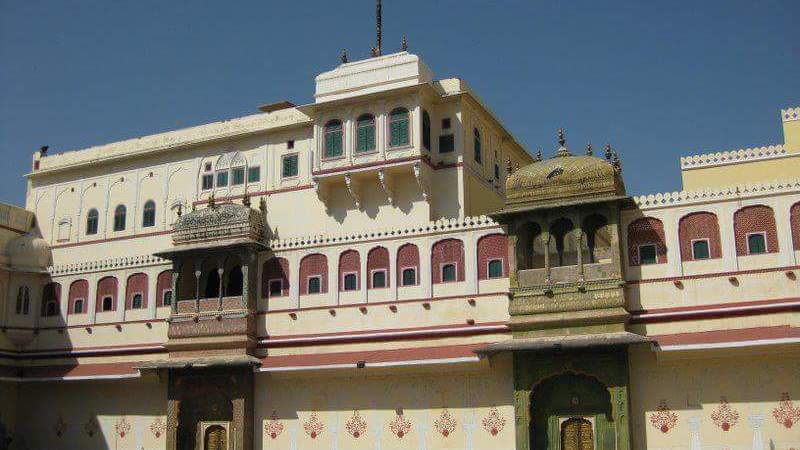Monumental Gates has always been a reflection of prosperity for Kingdoms. Rulers, over the course of human civilisation, have always wanted to build gigantic gates which will play a pivotal role in the security of the countrymen and also display the might of the state. Not only for military reasons, many gates have been erected to display joy, honour and in good gesture. ‘Gates’ have remained a very important component of Architecture in the country. All these mighty gates carry unforgettable legacy and history. In this Journey, I will be travelling through all those famous or infamous gates of India which have played important roles in the History of the Great Nation.
My quest for finding out the greatest gates of India brings me to the city of Jaipur in Rajasthan where I will visit the group of four intricately designed gates at the Pritam Niwas Chowk of Jaipur City Palace. These are not the gigantic Gates and can easily be termed as Doorways, but I can’t miss on these ones because they are some of the best-designed ones in the country.
- Located in: Jaipur
- Built in: 18th Century (Most probably between 1732 -1743)
- Height: 10 Mtrs
- Architectural Style: Shilpa Shastra (Mix of Rajput & Mughal Architecture)

The four gateways are located at the four corners of Pritam Niwas Chowk – a courtyard inside the Jaipur City Palace. The huge palace is divided into many courtyards and buildings. Many confuse the four gates with ‘Ridhi-Sidhi Pol’ however it is not correct – The Ridhi-Sidhi Pol is the gateway between the Diwan-i-Aam & Pritam Niwas Chowk of the palace, however, the four gates are different and are located inside the chowk.


The Peacock Gate & The Rose Gate
Jaipur, the first planned city in the country was a brainchild of ‘Sawai’ Jai Singh II, the most noted among the rulers of the Amber, the capital of the Kachwaha Rajputs. Jai Singh II established the city of Jaipur, shifting his capital from The Amber Fort and on the centre of the Pink City, the palace was built. Between 1729 & 1732, the outer boundary of the palace was built and after that, the inner palaces of mahals were created. This process of addition continued till the twentieth century, however, the Chandra Mahal (Chandra Niwas) & Mubarak Mahal were built during the lifetime of Sawai Jai Singh II. The Pritam Niwas Chowk, which is the entrance courtyard for the Chandra Mahal – The royal residence, was constructed during the same time.
In the chowk, four extremely decorative gates of four different colours & themes were created which connects the Semi-Public chowk with the private inner world of the royal family. The gates were in perfect harmony with the design of the courtyard despite their completely different design, pattern and colours. It is a marvel created by the two principal architects of the ‘Jaipur’ project, Vidhyadhar Bhattacharya & Sir Samuel Jacob.
Read the JAIPUR TRAVELOGUE

The four magnificent doorways depict four seasons in the Hindu calendar and are dedicated to four Hindu Gods. The Lotus Gate represents Summer while the Rose Gate symbolises Winter. The Lehariya Gate depicts Spring while Peacock Gate, the most famous among these, represents Autumn. The Peacock Gate is dedicated to Lord Vishnu, the Lotus Gate is dedicated to Lord Shiva-Parvati, the Green Gate is dedicated to Lord Ganesha and the Rose Gate is dedicated to Goddess Devi.
Each of the Gate follows a similar pattern. The upper half of the Gate is a ‘Jharokha’ or balcony with two pilasters & a chhatri or pyramidal roof – a typical element of Rajasthani or Rajput Architecture. Each of the chhatris is topped with five bulbous finials. While the top half has predominant Rajasthani elements, the gateway part has more Mughal elements. All of the four doors are actually rectangular with moulding design on the top corners. The grandness of the doors is created by a majestic arch creating a niche or Pishtaq and ‘Dantedaar Mihrab’ or the denticular arch – both elements of the Mughal Architecture. The gates are clad with glass mosaic tiles – imported by the Mughals from Persia but extensively used by the Rajputs in their forts.
Read the JAIPUR TRAVELOGUE
While the lower half of the gate blends with the courtyard wall the jharokha blends superbly with the row of windows on the top floor of the mahal. The centre of the arches of the gates possess the image of the deity it is dedicated to and the floral pattern surrounds that. The Lehariya Pol or the Green Gate has fantastic floral design entirely with green tiles. The lotus gate ha beautiful patterns of lotus flower and petals made with red & yellow tiles. Similarly, the rose gate has rose petal decoration in fascinating form. The most beautiful and famous among these is the Peacock Gate which has five peacocks made in the arch while the beautiful tail of the birds fills the niche with rainbow colours. The entire Gate has images of playful peacocks.

The Green Gate
The beautiful mix of elements of Mughal and Rajasthani Architecture in these gates make these perfect exhibition of the Shilpa Shastra – a style of architecture developed by Vidyadhar Bhattacharya.
Read the JAIPUR TRAVELOGUE
How to Reach: The City Palace is located in the centre of the Pink City. Auto, Taxi have very good communication with the place
Time to Visit: The Palace remains open between 9am & 5pm daily. Ideally, October-March is the best season to visit Jaipur.
Entry Fee: There is an entrance ticket worth Rs. 200/- for Indians and Rs. 500/- for foreigners. There is a separate ticket for Chandra Mahal. Combined ticket for Palace & Jaigarh Fort can be obtained also.
![]()






Gate with a long history to its credit. City Palace and the nearby Museum are excellent.
LikeLiked by 2 people
Yes they are… Its a beautiful city…
LikeLike
These gates are so ornate! Thank you for sharing the stories about them.
LikeLiked by 3 people
🙂
LikeLike
Awesome images.
LikeLiked by 3 people
Thanks
LikeLiked by 1 person
The peacock and rose gates look absolutely wonderful ! I went to Jaipur as a child and haven’t been since, always think about going when I visit my parents in Delhi. I love historical places and architecture and I know for a fact there’s a lot of that in Rajasthan. I must visit this place, thanks for sharing !
LikeLiked by 4 people
Thanks a lot
LikeLike
[…] the next part of my Journey through The Greatest Gates of India (Read More Here), I will visit the two most fascinating gates of the country. First up is the – Buland […]
LikeLiked by 2 people
Wow these gates are really Instagram worthy. I can’t wait to see those for myself. You’re pretty lucky to jave visited them. 🙂
More power to your blog.
LikeLiked by 4 people
Thank You so much
LikeLike
I have visited Jaipur like 20 times in last 3 years and still didn’t know about these gates. I’ll try to find them when I come for Jaipur lit fest. Or may be you can show me around 😀
LikeLiked by 4 people
😀😀😀 I m sorry. Will not be able to accompany you. I stay in Kolkata
LikeLike
Jaipur is one of the most fascinating cities of India. I love it for its rich history. Your post is well articulated with beautiful pictures 🙂
LikeLiked by 4 people
This is simply fascinating! Jaipur truly must be a jewel of a city! I really wish I could visit it someday! Thank you for putting together such an informative article!
LikeLiked by 4 people
Thank you so much
LikeLike
My favorite place and on my bucket list place is India! Beautiful photos and stunning architecture. Great share I’m going to bookmark this page for my travel reference. Thank you! xo
LikeLiked by 3 people
yes. please visit this place.
LikeLike
Indeed, these are beautiful doors
LikeLiked by 2 people
India is an ancient culture with beautiful architecture. Thanks for the follow 🙂
LikeLiked by 1 person
yes… the country is full of such beautiful pieces art and architecture..
LikeLike